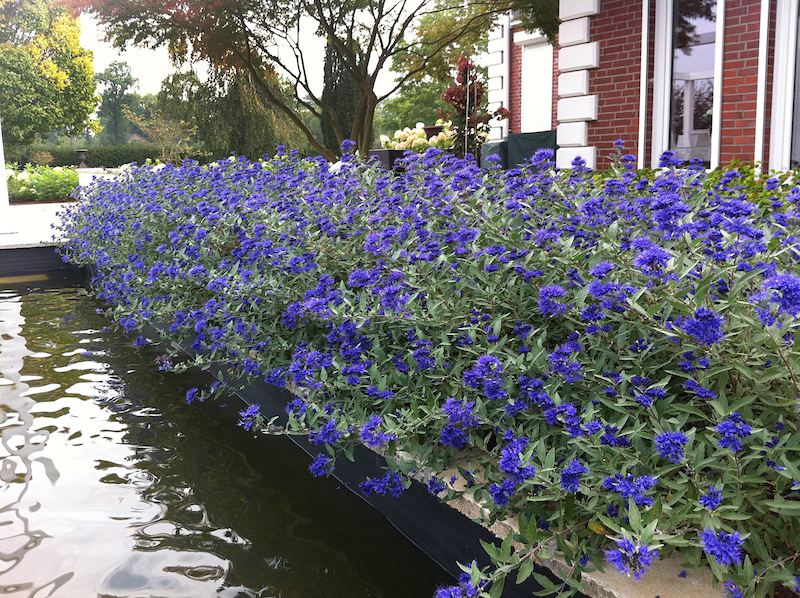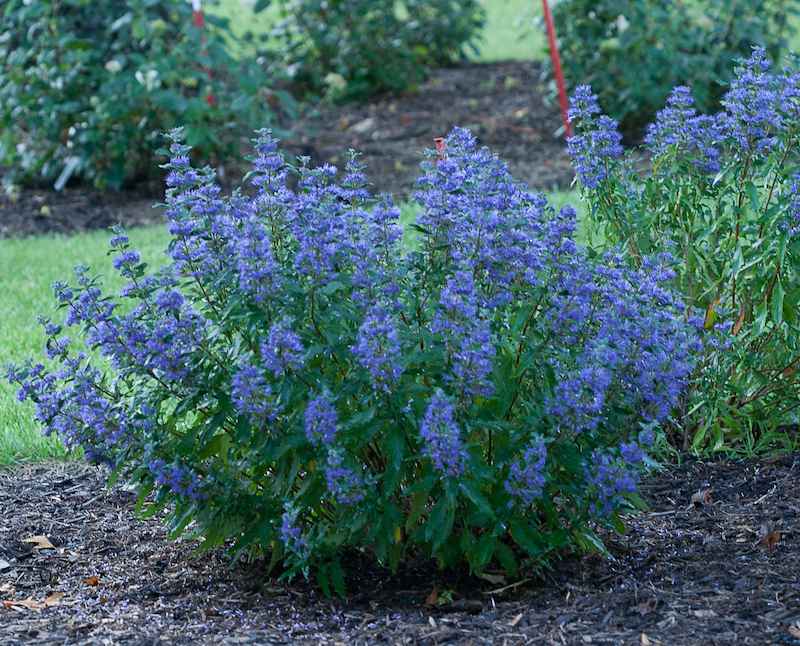Caryopteris, commonly known as Bluebeard, is a perennial-flowering shrub that adds bold color and texture to USDA zones 5 through 9. Pollinators like bees and butterflies are drawn to the delicate flower clusters and ensure this plant serves a vital role in the local ecosystem. Bluebeard is easy to maintain and will stay healthy and full with a few important planting and care tips.

What You Need To Plant Bluebeard
- Shovel
- Compost or manure
- Garden spade
- Good location
- Water source
- Mulch
Where to Plant Bluebeard
Plan Bluebeard in full sun. This shrub can handle partial shade but may not produce as many flowers in lower light levels. Use medium-moisture soil that is well drained because Bluebeard does not like soggy conditions. A neutral soil pH will best support growth, although Bluebeard is versatile and can handle slightly alkaline or neutral soil. Position the root ball, so it is even or slightly higher than the surrounding ground.

Bluebeard Spacing
Bluebeard has an upright growth habit and can easily support itself. Position Bluebeard about 3 feet from the center of one shrub to neighboring shrubs or buildings. Bluebeard reaches 2 to 3 feet tall, making this flowering bush suitable to create a low row or border.

Steps To Plant Bluebeard
Location is important when planting shrubs like Bluebeard; choose a spot that receives full sun and is wide enough to accommodate Bluebeard’s mature size. Bluebeard does not get very tall, so position this plant in an area that is not blocked by taller plants or buildings. Dig a hole slightly larger than the root ball and mix in organic compost or manure to support healthy growth. Water Bluebeard right away and continue to water regularly until it has established.
Step 1 - Select a location that receives full sun
Step 2 - Dig a hole larger than the root ball
Step 3 - Amend the soil with organic compost or manure
Step 4 - Position the root ball in the hole so the crown is even or slightly higher than the surrounding ground
Step 5 - Backfill the hole and firmly press the soil into place
Step 6 - Water the plant and drench the soil until the entire root ball is wet
When to Plant Bluebeard
Spring is the ideal time of the year to plant Bluebeard, so it will have plenty of time to acclimate before winter. In regions with mild winter weather, you can plant this shrub in the fall. Water thoroughly immediately after planting. Avoid planting during a heat wave, but if you must, make sure to give the plant ample water.
Transplanting Bluebeard
Bluebeard may self-seed, which happens when new plants grow from seeds that fall from the spent flowers. These small plants can be dug up and moved to a spot with enough space to grow and thrive. Spring is a good time to move new plants or relocate older plants.
 |
Author Alison Cotsonas - Published 09-01-2022 |
